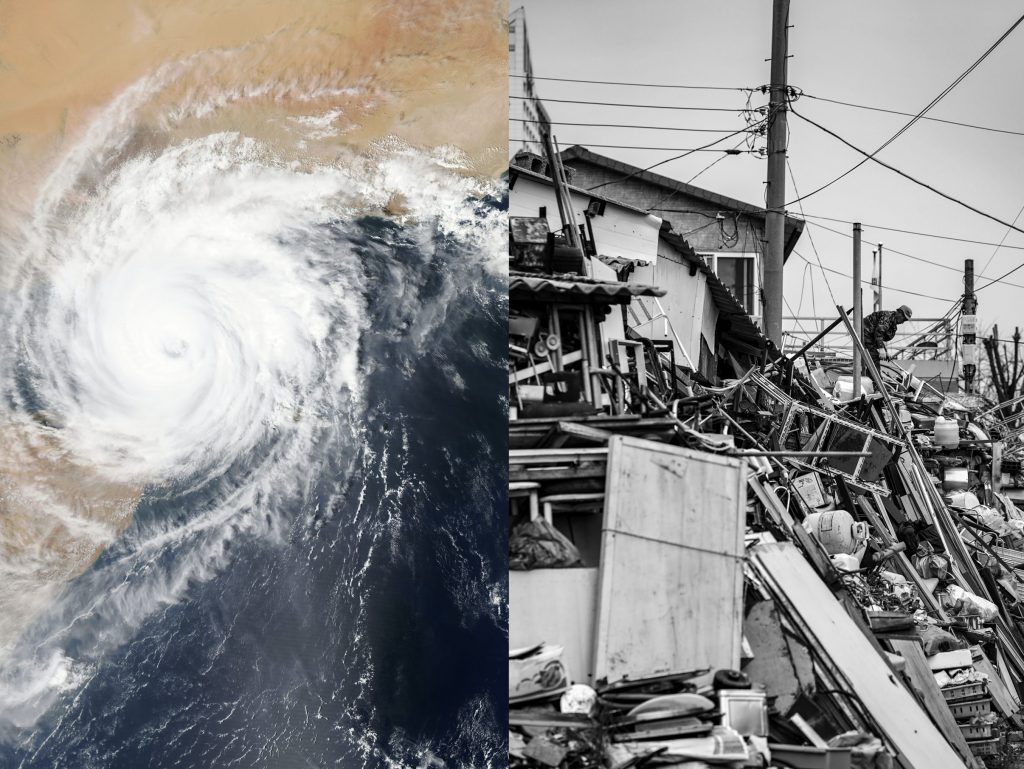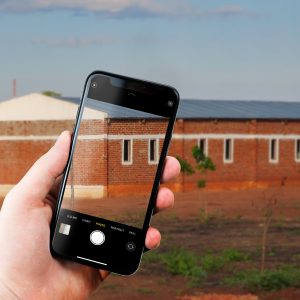Simplifying the Identification of School Infrastructure Vulnerability at Scale

Overview
The Cal Poly Digital Transformation Hub (DxHub) powered by Amazon Web Services (AWS) collaborated with Cal Poly faculty and students and the World Bank’s Global Program for Safer Schools (GPSS) to design a process that could save time and money in determining the structural type of school buildings to assess their vulnerability. Worldwide, natural disasters like earthquakes and cyclones put more than 1,000,000 school buildings in low- and middle-income countries at risk of collapsing, and an estimated 875 million children and teachers at risk of being injured. Time is of the essence, but gathering the necessary baseline information to prioritize risk mitigation investments is a time-consuming, expensive task that requires experts to travel and inspect school infrastructure in remote areas.
Problem

GPSS seeks to improve the safety of schools by strategically prioritizing investments based on factors such as building vulnerability and the region’s earthquake hazard level to which they are exposed. However, there’s a lack of high-quality data about building structural characteristics and no efficient way to analyze and manage this data once it’s collected. The process of labeling, managing, and assessing the photographic data is also time-consuming, expensive, and hard to do across tens of thousands of schools.
To address this problem, Cal Poly faculty and student teams designed and demonstrated a mobile application that guides school administrators and other community members through photographic data collection. The photos are uploaded to the cloud where an algorithm determines the building category, height range and main structural system. The results are remotely reviewed by a trained engineer for accuracy. From there, the data are aggregated and provided to planners and decision-makers to prioritize risk mitigation investments quickly.
Innovation In Action
 is project was launched by students in two Cal Poly computer science classes taught by Dr. Franz Kurfess. The first class focused on human-computer interaction and helped the GPSS team further refine their design concepts for the mobile application. This work helped inform the GPSS team on a long-term User Interface/User Experience (UI/UX) vision, and alleviated travel requirements by incorporating a cloud-based data collection platform. The second group, a graduate class on artificial intelligence, focused on leveraging the GPSS team’s existing field data to demonstrate the feasibility of automating building classification. The class developed proof-of-concept machine-learning models by utilizing three of the 12 structural taxonomy classifications used by GPSS to inform the assessment of large school infrastructure portfolios.
The Cal Poly DxHub worked with GPSS to further refine their long-term vision and identify immediate next steps. The GPSS team is confident that the augmented analytics and data management solution can address the problem at scale.
Next, Cal Poly faculty and students will further develop the machine-learning models by adding structural taxonomy classifications to the models, which will improve the resolution of the assessment, and by focusing upon improving the accuracy of the models overall. Furthermore, the GPSS team will advance the students’ work to create a data management, annotation, and analytics tool that will leverage machine learning. The solution will ingest data collected from the field and apply classification models for validation by a trained engineer. The engineer will act as a ‘human in the loop’ by further training the machine learning models to improve the algorithms and classifications incrementally. By enabling data analysis on a large scale, rapid and cost-effective assessments can be made. This solution supports a data-driven prioritization of investment and will improve student, teacher, and staff safety.
is project was launched by students in two Cal Poly computer science classes taught by Dr. Franz Kurfess. The first class focused on human-computer interaction and helped the GPSS team further refine their design concepts for the mobile application. This work helped inform the GPSS team on a long-term User Interface/User Experience (UI/UX) vision, and alleviated travel requirements by incorporating a cloud-based data collection platform. The second group, a graduate class on artificial intelligence, focused on leveraging the GPSS team’s existing field data to demonstrate the feasibility of automating building classification. The class developed proof-of-concept machine-learning models by utilizing three of the 12 structural taxonomy classifications used by GPSS to inform the assessment of large school infrastructure portfolios.
The Cal Poly DxHub worked with GPSS to further refine their long-term vision and identify immediate next steps. The GPSS team is confident that the augmented analytics and data management solution can address the problem at scale.
Next, Cal Poly faculty and students will further develop the machine-learning models by adding structural taxonomy classifications to the models, which will improve the resolution of the assessment, and by focusing upon improving the accuracy of the models overall. Furthermore, the GPSS team will advance the students’ work to create a data management, annotation, and analytics tool that will leverage machine learning. The solution will ingest data collected from the field and apply classification models for validation by a trained engineer. The engineer will act as a ‘human in the loop’ by further training the machine learning models to improve the algorithms and classifications incrementally. By enabling data analysis on a large scale, rapid and cost-effective assessments can be made. This solution supports a data-driven prioritization of investment and will improve student, teacher, and staff safety.

Supporting Documents
| Press Release & Frequently Asked Questions | During the Innovation Workshop, a fictional Press Release and nonfictional Frequently Asked Questions are drafted. This is a tool that is used to define the solution and why it matters to the customer. |
| Storyboard | A series of frames designed to illustrate the problem and the impact of the solution visually. |
| CSC 486 Student Paper | This document was coauthored by students in CSC 486 Human-Computer Interaction, Winter 2020. Student participants include Sydney Nguyen, Matthew Patacsil, Andre Viloria, Gabriel Medina-Kim, Joshua King, and Nathan Tu. |
| CSC 580 Student Paper | This document was coauthored by students in CSC 580 Artificial Intelligence, Winter 2020. Student participants include Ian Atol, Stephen Hung, Hanson Egbert, Dmitriy Timokhin, Donnie Sanchez and Anurag Uppuluri. |
| CSC 480 Student Paper | This document was coauthored by students in CSC 480 Artificial Intelligence, Fall 2020. Student participates include Martin Jiang, Finlay Piroth, Eric Newcomer, Julian Rice, Sveta Selvan, Ziyi Wang, Steven Le. |
| CSC 480 Student Paper Follow Up | This document was coauthored by students in CSC 480 Artificial Intelligence, Winter 2022. Student participants include Zachary Cipolla, Evan Diaz, Nicholas Hansen, Laura McGann, Melissa Nardone, and Finian Rawson. |
| CSC 570 Student Paper | This document was coauthored by students in CSC 570 Deep Learning & Knowledge Graphs, Winter 2021. Student participates include Alberto Rodriguez, Theo Watkins, Lemar Popal, Joshua Frederick, Caleb Watts, Donald Sanchez, Justin Evans, Weston Montgomery, Sherry Lin, Maxim Korolkov, Nick Schnorr, and Jack Pietrok. |
| CSC 580 Student Paper | This document was coauthored by students in CSC 580, Fall 2021. Student participants Anna Kiefer, Joshua Delgadillo, Erik Bruenner, Daniel Tisdale, and Connor Sexton. |
About the DxHub
Cal Poly’s Digital Transformation Hub (DxHub) was one of the earliest collaborations between Amazon Web Services (AWS) and an educational institution focused on innovation and digital transformation. While providing students with real-world learning experiences, the DxHub applies proven innovation methodologies in combination with the deep subject matter expertise of the public sector and the technical expertise of AWS to solve challenging problems in ways not contemplated before. For more information, visit dxhub.calpoly.edu.
